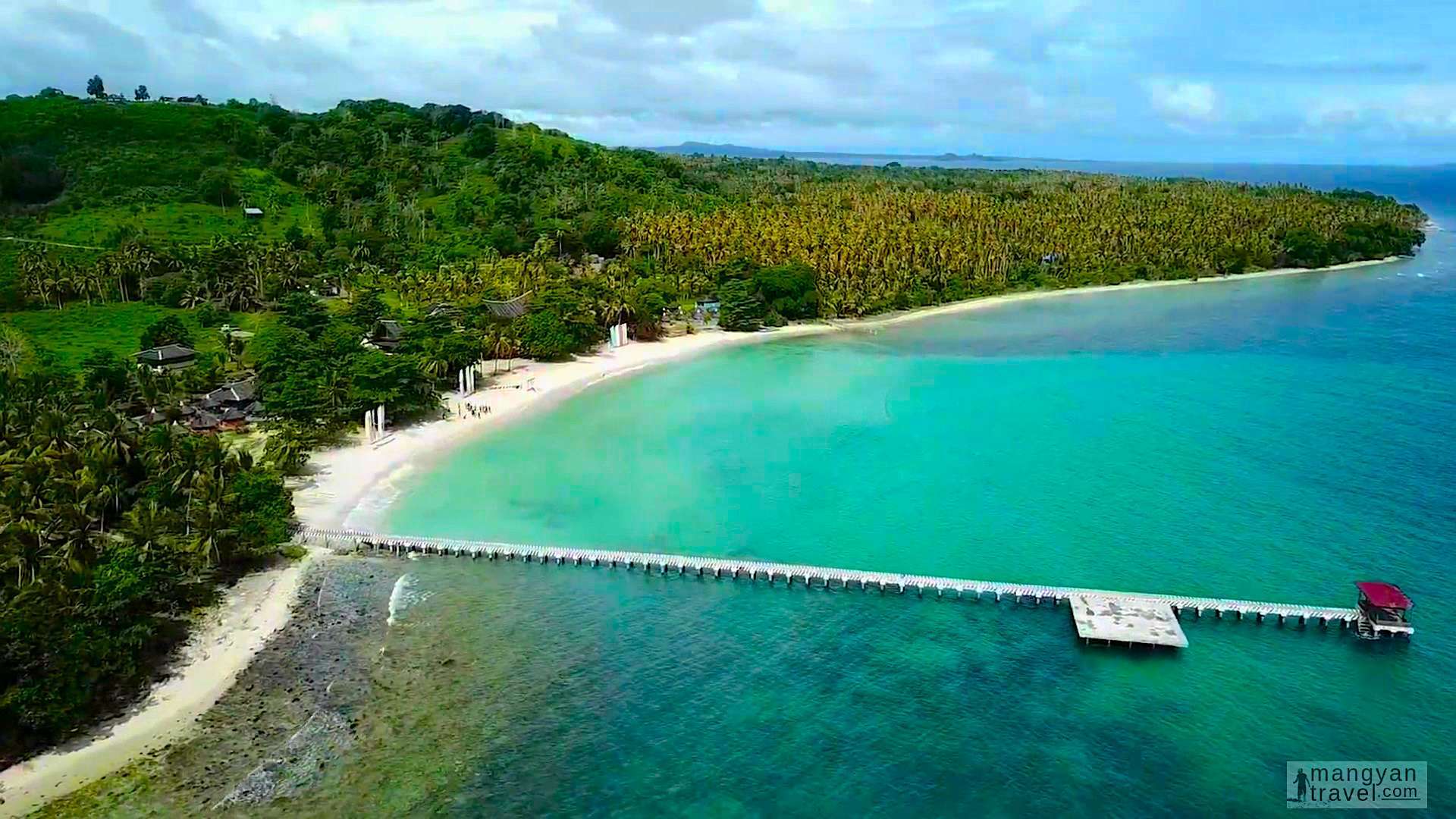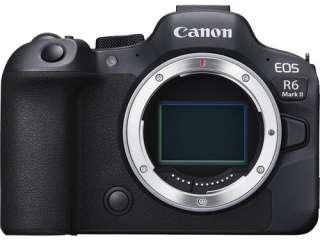About basilan
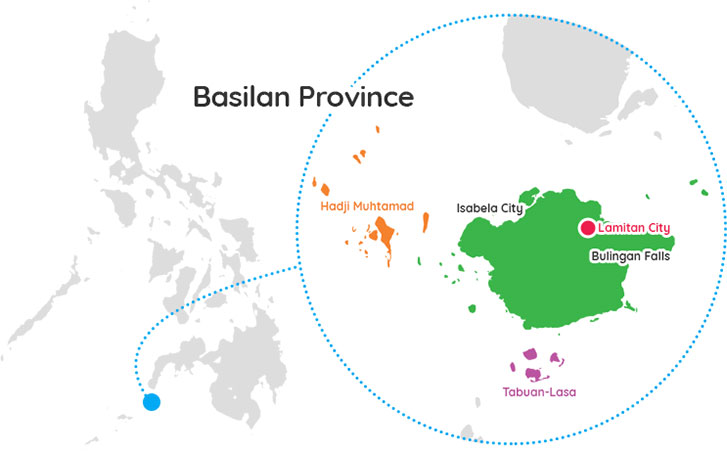
Basilan, officially the Province of Basilan, is an island province of the Philippines located primarily in the Bangsamoro Autonomous Region. Basilan Island is the largest and northernmost of the major islands of the Sulu Archipelago. It is just off the southern coast of the geographic Zamboanga Peninsula.
Isabela, the former capital, is a component city under the provincial government of Basilan but is administered as part of the Zamboanga Peninsula Region and is listed statistically independent. The provincial capital has since been transferred to Lamitan. Despite this, the provincial Capitol and government offices are still located at Isabela.
Basilan is home to three main ethnolinguistic groups: the indigenous Yakans, and the later-arriving Tausugs and Chavacanos. The Yakans and Tausugs are predominantly Muslim, while the Chavacano are mainly Christian. There are also a number of smaller ethnic groups. Although the official languages are Filipino and English, the main native language is Yakan and lingua franca is Chavacano. Other languages include Tausug, Cebuano, and Sama.
Basilan, although classified as a 3rd-class province in terms of gross provincial income, has one of the lowest incidences of poverty in the Philippines (26.19% of the general population), ranked 20 among the Philippines' 80 provinces. (In comparison, Maguindanao which is ranked last at number 80 has a poverty incidence of 44.24%.) The gap between Basilan's rich and poor residents are among the narrowest in the country (ranked 3rd nationwide), pointing to one of the most equitable distributions of wealth anywhere in the country (Gini coefficient 0.2826, which is slightly better than the provinces of Pampanga, Bulacan, Nueva Ecija, Tarlac, Cavite, Batanes and Batangas).
Antonio Pigafetta of the Magellan Expedition, records the name of Basilan as "Taghima", and was variously spelled in other early European maps as "Tanguima", "Taglima", "Tagimar", "Tagema", and "Tagyto". The first record of it being called "Basilan" is by a Jesuit historian, Fr. Colin.
Oral traditions of the local Yakan people include several names for pre-historic Basilan: "Uleyan", which is derived from the present-named Basilan Peak (Puno Mahaji), and later changed to "Matangal" after a mountain farther to the east of the island. These names were presumably used by the Maguindanao traders from mainland Mindanao, using these mountains as navigation landmarks when sailing the Celebes Sea.
Other names romantically given were "Puh Gulangan" or "island of forests", "Umus Tambun" or "fertile land", "Kumalarang" after the westward flowing river on the island's western half which is otherwise called Baunuh Peggesan.
History
In the order of tens of thousands of years ago, Melanesians arrived in the Philippines travelling down to Mindanao. Several thousands of years ago, Austronesians arrived in the Philippines, also travelling down to Mindanao.
The Yakan people arrived in the area of the Sulu Archipelago, of which Basilan is a part, around 300 BCE to 200 BCE. Little is known of them before the era of Spanish colonization, but they still make up the largest ethnic group on the main island of Basilan. It is believed that the Yakan people of Basilan made contact with the Kingdom of Champa in present-day Vietnam, and many of them have ancestries from Champa settlers, who later integrated with the Yakan.
As the Tausug Sultanate of Sulu grew in power, the Yakans withdrew inland, until most of the coastal communities along the island's southern, western and northwestern shores were primarily inhabited by Tausugs and their vassal tribes, the Samals and Bajaus (Tau-Laut). The only exception was the relatively prosperous Yakan communities of Lamitan.
Documents from the royal archives of the Sulu Sultanate referred to the northernmost island of the Sulu Archipelago as Taguima, from the Yakan who were called "Tagihamas" (people of the interior or hinterlands) by the Tausug and Samal peoples who came and settled in numerous scattered communities along Basilan's western and southwestern shores and outlying islets and island groups.
Later references mentioned "Bantilan", probably referring to Maluso, which was established as a major Tausug base by Sulu Sultan Muizz ud-Din (whose princely name was Datu Bantilan).
Imperial Chinese texts mention a "Kingdom of Kumalarang" (from the Yakan "kumalang" or "to sing", owing to the location being a place for celebrations and gatherings) during the Ming Dynasty, believed to be the island which now has a barangay of the same name on its northwestern shores.
Basilan was seen and mentioned by the remnants of the Ferdinand Magellan expedition in 1521.
The earliest map of the Philippines which made reference to an island labeled "Taguima" was produced by Giacomo Gastaldi, through woodblock prints in 1548. It was subsequently included in the influential travel book of Giovanni Battista Ramusio, the Della Navigatione e Viaggi, which was published between 1556 and 1583 in three volumes. This was followed by Abraham Ortelius's work Indiae Orientalis Insularumque Adiacientium Typus, published in 1573 in a German text edition of the atlas Theatrum Orbis Terrarum by Christophe Plantin in Antwerp. As late as 1719, a map titled "Die philippinische Inseln - Isle Brneo" by Allain Manesson Mallet of Frankfurt, Germany featured an island labeled "Tagyma I."
The process by which all these names became "Basilan" is almost certainly due to miscommunication between the natives and the Spanish, as well as the penchant to engage in editorial license by European map-makers of the era.
Basilan's name may also derive from its iron ore deposits. Tausug warriors and slave-traders from Sulu came to Taguima to purchase high-quality magnetic iron ores, which they used for swords, knives and other blades. This profitable trade, helped in large measure by the establishment of Maluso as a major military-naval base of the Sulu Sultanate, eventually gave the island the distinction of being the source of basih-balan, the Tausug word for magnetic iron. Roughly translated and abbreviated, however, basih-lan means "the iron (magnet) trail" or "the iron way".
When several Tausug warriors were caught by the Spanish in one of their numerous raids on the Zamboanga settlement, Spanish officials supposedly admired the artistry and skill that went into making the warriors' elaborately decorated swords, knives and blades. They asked where these weapons could be bought. From atop the ramparts of the Spanish commandery at the Fuerza del Nuestra Senora del Pilar de Zaragoza (Fort Pilar), the warriors supposedly pointed to the island visible across today's Basilan Strait, and said, simply, "ha basih-lan".
Reports from the Jesuit reducciones in Zamboanga and Pasangen (Isabela) were relayed to Manila, where Spanish cartographer Pedro Murillo de Velarde published Historia de la Provincia de Philipinas de la Compañia de Jesvs. Segvnda parte using the Jesuit printing press at Manila in 1749. It featured a map of the Philippines with the unofficial "I. Basilan". The map was re-published by Leipzig map-maker Nicolaus Bellinn for general European circulation in 1752.
Finally, to represent a clear break from the Habsburg Dynasty (which had ruled Spain for 184 years from 1516 to 1700), the first officially sanctioned Spanish maps of its colonies, including "Las Islas de Mindanao", were commissioned by the Bourbons (1700–present). This particular map of Mindanao, apparently copied from the Nicolaus Bellinn map of 1752, was published by Nicolas Norton Nicols in 1757, featuring "Basilan" and bearing the royal stamp of Spanish Bourbon King Ferdinand VI. It has been called "Isla de Basilan" (Basilan Island) ever since.
It was eventually colonized by the Spanish as early as 1636 and was formally ceded by the Sulu Sultanate to Spain in 1726. The withdrawal of the Yakans inland was hastened by Spanish establishment of advance bases on the island's northwestern coast, bringing in Christianized 'indios' from Zamboanga, the Visayas and Luzon. By then, even the Yakan communities of Lamitan were completely overrun. Jesuit missionaries brought Catholicism to the region. Fighting with the Sultanate, the Dutch East India Company, Moro Pirates, and the French figured in Basilan's history over the years.
In 1973, Basilan officially became a province carved out in the Province of Zamboanga del Sur.
The province joined the Autonomous Region in Muslim Mindanao in 2001, it was last province to do so. Its former capital, Isabela City, opted out and remains a part of the Zamboanga Peninsula Region (formerly Western Mindanao, Region 9).
Listings in basilan
More Provinces
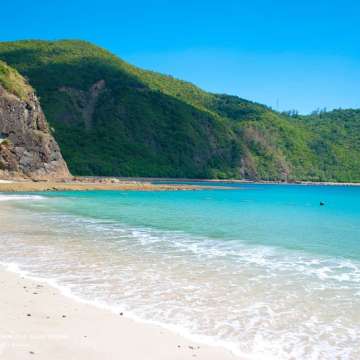
aurora
Beyond the lush forest of the Sierra Madre Mountains lies a splendid land so unbelievably rich and untouched, Aurora Province, otherwise known as the "Sanctuary of Nature's Splendor". The Sierra Madre Mountain range covers a large part of the province of Aurora. In fact, next to the Aurora coastline, this ...read more
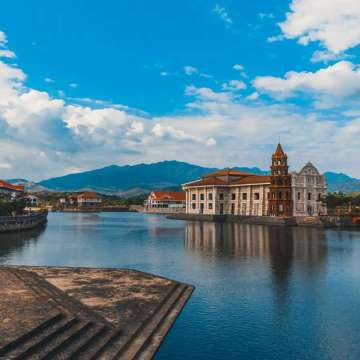
bataan
Bataan, officially the Province of Bataan, is a province in the Central Luzon region of the Philippines. Its capital is the city of Balanga while Mariveles is the largest town in the province. Occupying the entire Bataan Peninsula on Luzon, Bataan is bordered by the provinces of Zambales and Pampanga ...read more

